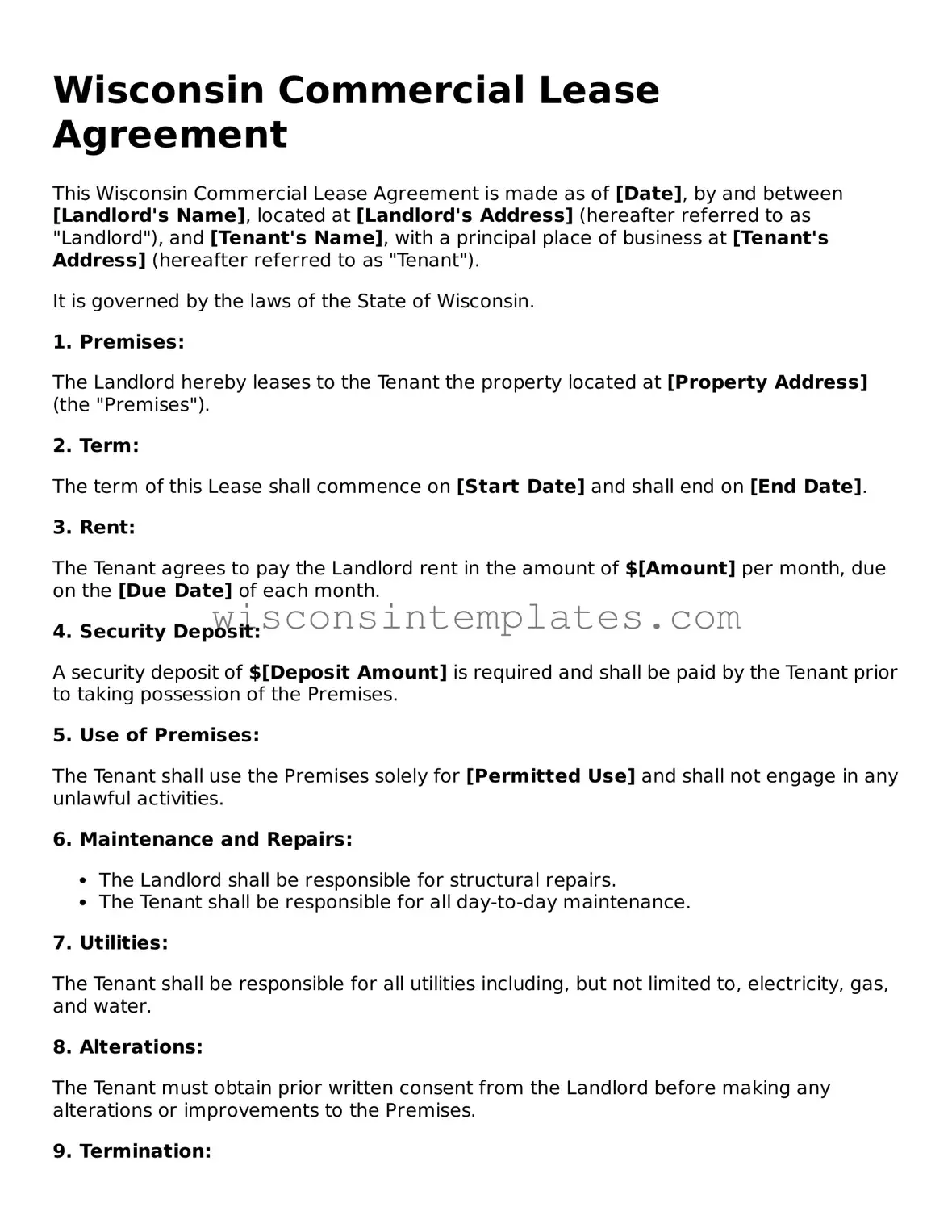The Wisconsin Commercial Lease Agreement form serves as a crucial document for landlords and tenants engaging in commercial property transactions. This agreement outlines the essential terms and conditions governing the rental of commercial space, ensuring that both parties have a clear understanding of their rights and responsibilities. Key aspects of the form include the identification of the parties involved, a detailed description of the leased premises, and the duration of the lease term. Furthermore, it addresses the rent amount, payment schedule, and any additional costs such as utilities or maintenance fees. Provisions regarding security deposits, property use, and permitted alterations are also integral components, as they protect the interests of both the landlord and tenant. Additionally, the agreement often includes clauses related to termination rights, renewal options, and dispute resolution, which can significantly impact the relationship between the parties. Given the complexities of commercial leasing, understanding the nuances of this form is essential for anyone entering into such agreements in Wisconsin.
